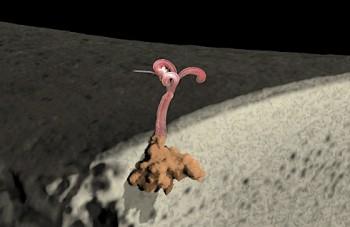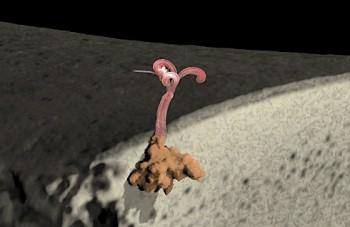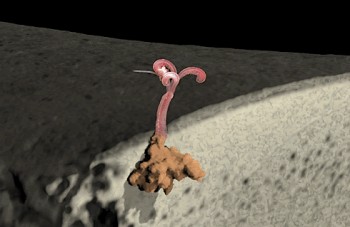Bone-Munching Zombie Worms Found in Whale Fossil
Canals made by worms from the genus Osedax have been found in a 3-million-year old whale bone from the Mediterranean sea off Italy.

3D CT scan of a bone-eating 'zombie' worm from the genus Osedax, showing the canals it makes into the bone. Natural History Museum
|Updated:






